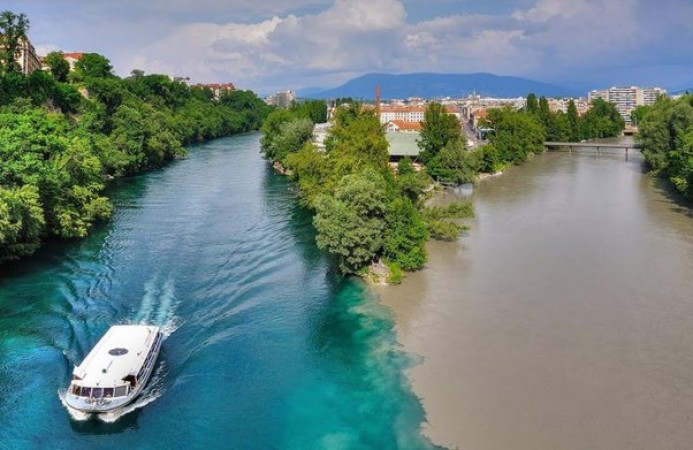
When we talk about unique natural wonders, Uttar Pradesh (UP) in India often slips under the radar. Yet, it holds a geographical marvel that is unparalleled: it's the only place in the world where five rivers meet. This phenomenal convergence is not only a spectacle of nature but also holds immense cultural, historical, and ecological significance.
The Ganges River is revered as the most sacred river in Hinduism. Originating from the Gangotri Glacier, it flows through UP, providing water and sustenance to millions. Its cultural and spiritual significance is unmatched, making it the heart of the river confluence.
The Yamuna River, another major river, runs parallel to the Ganges for much of its course. The Yamuna’s waters are crucial for agriculture and daily life in the region, and it has its own religious importance, with the city of Allahabad (Prayagraj) being a major pilgrimage site.
Although often considered a mythical river, the Saraswati River is believed to have once flowed through this region. Ancient texts describe Saraswati as a powerful and pure river, and its historical and religious context adds a layer of mystique to the confluence.
The Ghaghara River, known for its strong currents and vast water volume, contributes significantly to the confluence. This river originates in the Tibetan Plateau and is a major tributary of the Ganges.
The Sindhu River, historically significant and often associated with the early Indus Valley Civilization, adds to the unique blend of waters. It symbolizes the ancient flow of history and civilization through this region.
The meeting point of these rivers, known as the Triveni Sangam, is a revered pilgrimage spot. It is a sacred site for Hindus, believed to be the place where sins are washed away and spiritual rebirth occurs. During the Kumbh Mela, millions gather here to take a holy dip.
Apart from its religious significance, the confluence of five rivers is a natural wonder. The different hues of water from each river merging together is a sight to behold, representing unity and harmony in diversity.
The convergence of these rivers is steeped in mythology. It is said that Lord Brahma performed a ritual at the confluence, and many believe the Saraswati flows invisibly and meets the Ganges and Yamuna here.
Historically, this region has been a focal point for numerous civilizations and empires. From the ancient Aryans to the Mughal Empire, the confluence has been central to the socio-cultural and political landscape of India.
The region where these rivers meet is rich in biodiversity. It supports a variety of aquatic life and provides a habitat for numerous species of birds, making it a crucial ecological zone.
However, this unique ecosystem faces environmental challenges. Pollution, especially in the Ganges and Yamuna, threatens the health of the rivers and the surrounding environment. Efforts are being made to clean and preserve these waters, but it remains a significant challenge.
For many, visiting the Sangam is a spiritual journey. Pilgrims from all over the world come to perform rituals, seek blessings, and wash away their sins. The spiritual energy of the place is palpable, and the rituals performed here have been passed down through generations.
The Kumbh Mela, held every 12 years, is one of the largest religious gatherings in the world. Millions of devotees converge at the Sangam to take a holy dip, participate in religious ceremonies, and connect with their spiritual roots.
Tourism around the confluence significantly boosts the local economy. From hotels to local markets, the influx of visitors provides numerous economic opportunities for the residents.
With the growing number of visitors, there is a push towards sustainable tourism. Efforts are being made to ensure that tourism does not harm the delicate ecosystem and that the cultural and natural heritage of the region is preserved.
There are ongoing conservation efforts aimed at protecting the rivers and the unique confluence. Government initiatives, along with NGO activities, focus on reducing pollution, promoting sustainable practices, and educating the public about the importance of this natural wonder.
Local communities play a crucial role in these conservation efforts. Their traditional knowledge and practices are invaluable in maintaining the health of the rivers and ensuring the sustainability of the region. UP’s unique confluence of five rivers is more than just a geographical feature; it’s a testament to the rich cultural, historical, and ecological tapestry of India. Whether you’re drawn by the spiritual significance, the natural beauty, or the cultural richness, the Sangam is a place that leaves a lasting impression. As efforts continue to preserve and protect this unique wonder, it remains a symbol of unity and harmony, reflecting the spirit of India itself.
What kind of diet should a cancer patient follow after chemotherapy, know what the experts say